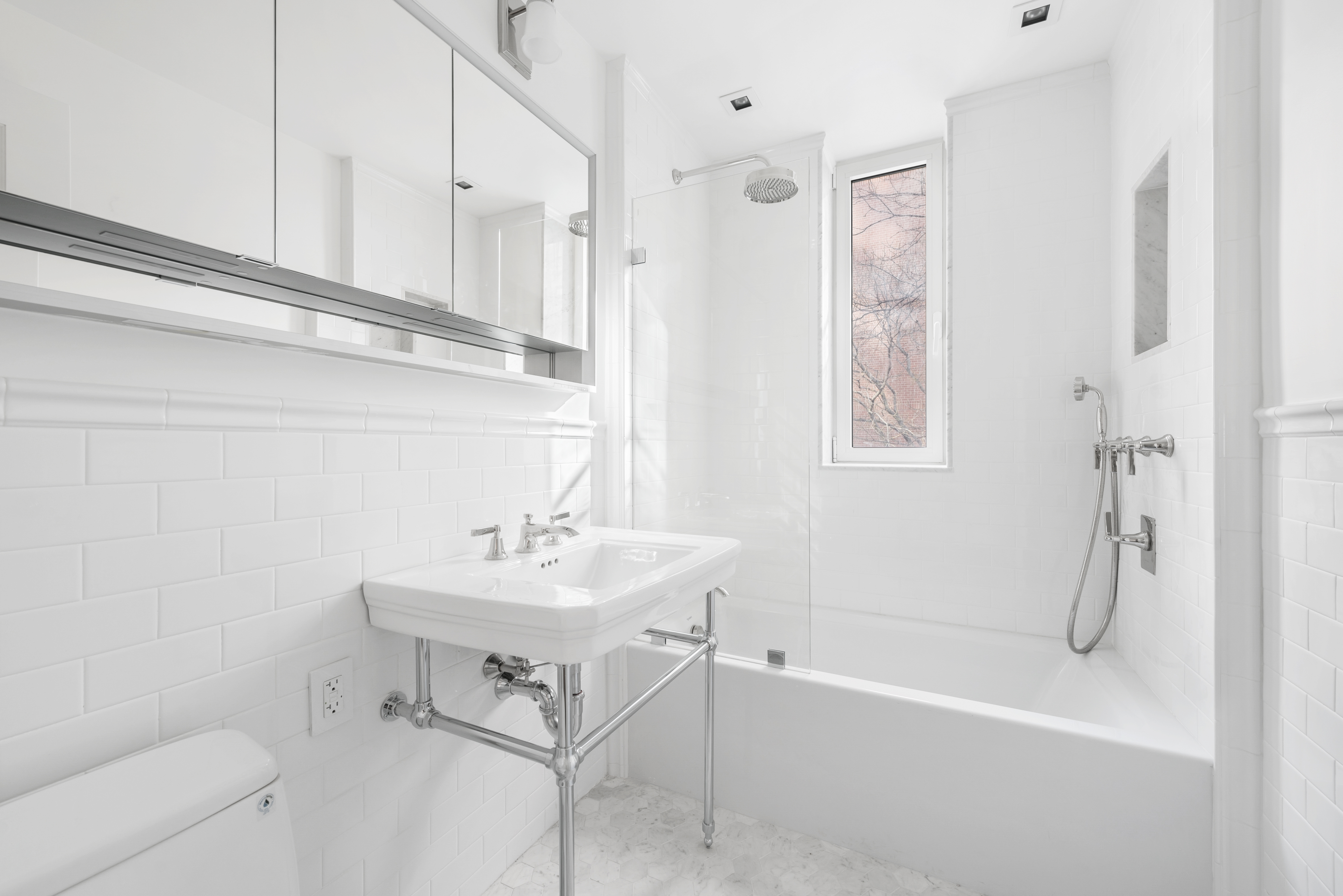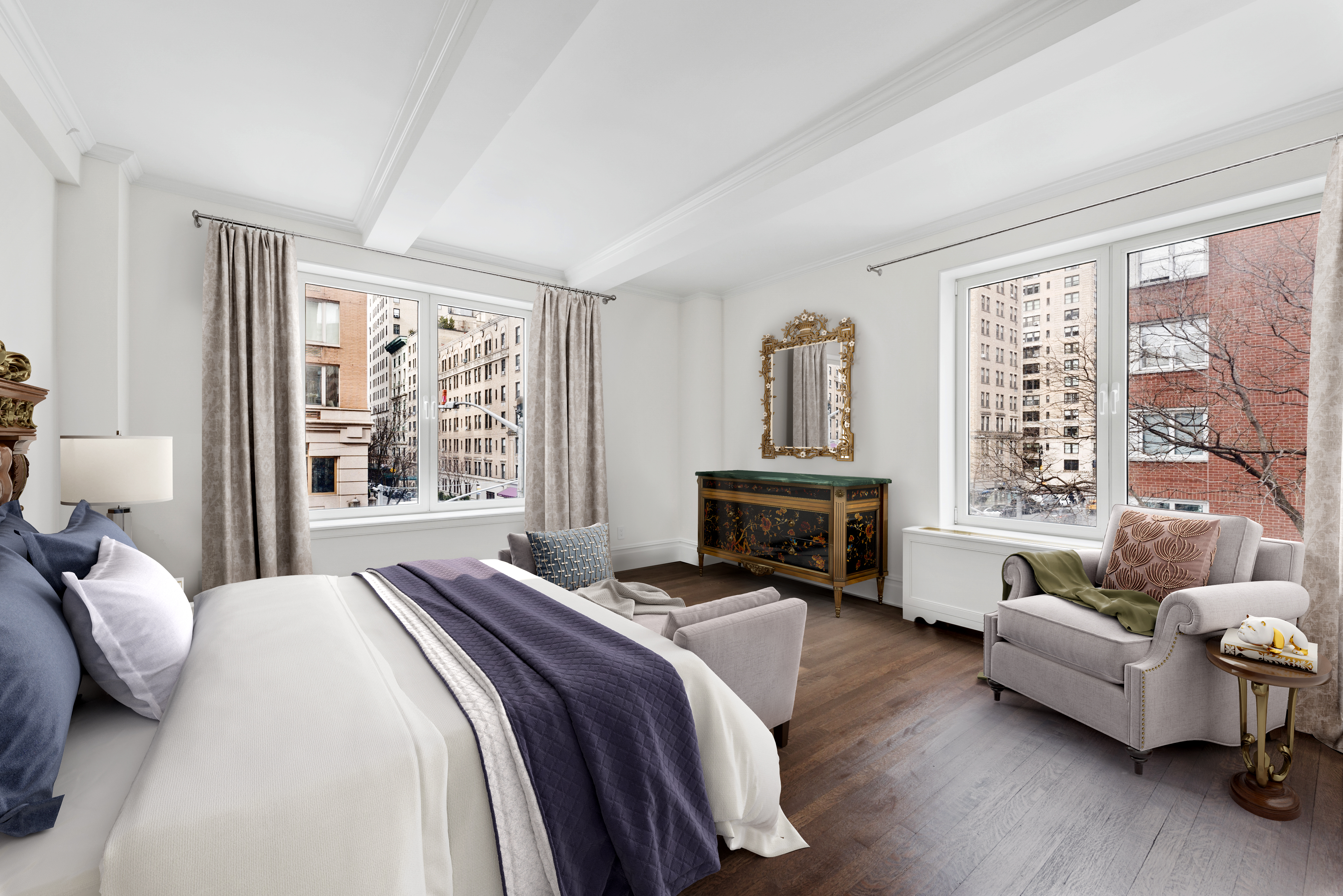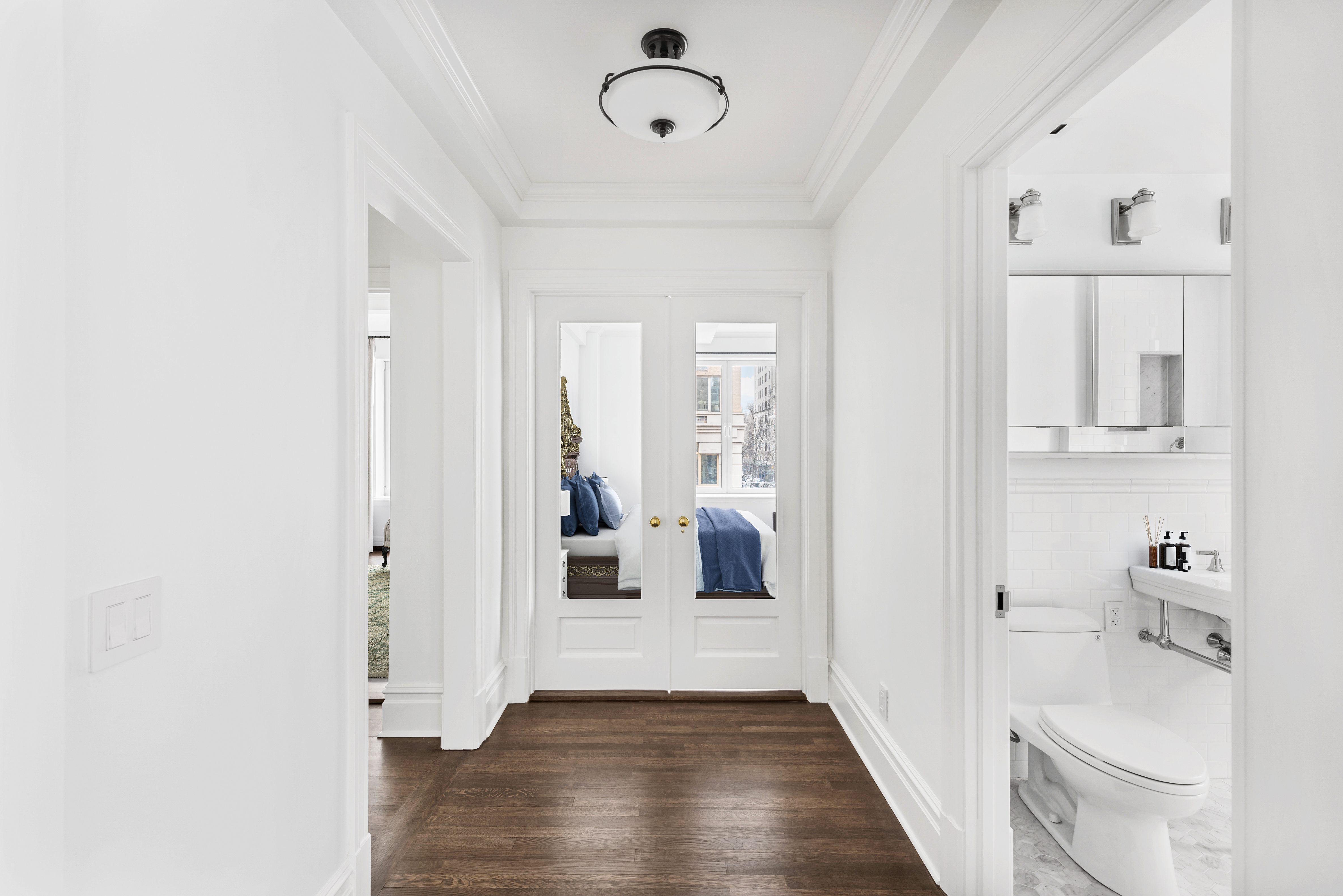Breaking down the costs of a high-end renovation for a Madison Avenue co-op

The apartment hadn’t been touched since the building was constructed in the 1920s. It was in desperate need of an update.
When Lisa and David purchased their co-op on the Upper East Side, they knew they had found a gem. The elegant apartment features a spacious foyer, a separate dining room adjoining the kitchen and living room, and large windows with incredible views of Madison Avenue.
However, the 1,200-square-foot corner apartment was in estate condition and hadn’t been touched since the building was constructed in the 1920s. It was in desperate need of an update. Luckily, Lisa and David had a clear vision for their renovation.
“The homeowners wanted a higher level of finish for the interior,” says Bolster architect Michael Fasulo. “That was their main objective—to clean it up. Lisa also has a mold allergy, and so one of the concerns was to gut the bathrooms to ensure there was no evidence of water issues.”
Cost transparency in real time
For Lisa and David, Bolster’s Design-Build renovation delivery model was the best process to remotely manage their renovation from the West Coast, where they were living at the time. Lisa and David also benefited from Bolster’s unique pricing model, which allowed them full visibility of all design and build costs upfront.
“Iterative pricing reflects the entire Bolster ethos,” says Jeronimo Aguilar-Gutierrez, Bolster’s vice president of pricing and procurement. “What Bolster does differently is price three times throughout the design process.”
Bolster’s unique pricing process follows three distinct phases:
- Schematic design—When the layout is determined
- Design documentation—When the board and the Department of Buildings have given their comments
- Construction documentation—When the homeowner finalizes all of their selections
For Lisa and David, who had a very clear idea of what they wanted to prioritize in their renovation, this was a win. Bolster’s in-house, iterative Design-Build pricing allowed them to understand their renovation costs upfront. The Bolster model also discourages changes throughout the process, as they can add up quickly.
“The huge benefit of a project like this is that the homeowners could prioritize finishes because they had visibility into the total cost of their project at every stage,” Jeronimo says. “Bolster’s unique design-build pricing model allowed them to commit to decisions early on and thus understand their budget and pricing. They were able to commit to the project, and only had one change order.”
(Read more about Bolster’s project delivery methods here.)

Major cost drivers
The biggest costs in any renovation are likely to be mechanical (which includes HVAC), electrical, and plumbing. For Lisa and David, mechanical costs totaled $25,000; electrical costs totaled $38,000; and plumbing costs totaled $54,000.
The mechanical costs included a new HVAC system consisting of two through-wall units and a portable unit due to building restrictions.
“The building has special masonry decoration on one of the rooms, so we couldn’t do a through-wall,” says Michael. “We ordered a special window sash that allows us to use the portable in one room as a backup—but I don’t think they’ll need it. I think the homeowner will be nice and cool with the two through-wall units.”
Knowing the major cost drivers of their project upfront allowed Lisa and David to then prioritize the elements of the home that were most important to them.
Whether you're renovating a two-bedroom prewar co-op or a 4,000-square-foot brownstone, Bolster guarantees a beautifully designed home renovation risk-free and on-budget. "Expect flawless communication, white-glove service, and absolutely no surprise costs," says Bolster's CEO and co-founder Anna Karp. Ready to start your renovation? Learn more >>

Choosing where to spend and save
The areas where Lisa and David chose to invest were custom millwork ($36,000), including a bookcase and radiator covers. They also invested in high-end, high-touch fixtures and custom finishes such as doorknobs and plumbing fixtures. In total, Lisa and David spent $85,000 on finishes and $21,000 on specialty materials and items.
Some of the specialty items included satin nickel plumbing fixtures by Samuel Heath, and door hardware by Hamilton Sinkler. When selecting custom finishes to use throughout a home, Jeronimo had a suggestion to allow for coherence and consistency.
“When choosing a custom finish, it’s hard to match everything,” he says. “If you’re choosing the same finish throughout your home, I recommend choosing stainless steel or something easily replicable—don’t choose brass, for example, because it’s not easy to match throughout.”
Lisa and David chose to go high-end on some items and low- to mid-end on others to budget their project. This included refinishing the floors instead of replacing them ($17,000).
Mixing and matching is a good way for homeowners to meet their must-haves without sacrificing their entire budget.
“Their priorities were driven on things you can touch,” Jeronimo says. “They went very high-end on the things they’d be able to touch on a daily basis, such as hardware and plumbing fixtures, while they chose more of a mid-level quality for the tile and floors.”

Tackling challenges with confidence
Some areas of the apartment posed more challenges than others. One of the areas where Lisa and David saved was flooring. Though it had some imperfections, “they considered it a feature,” Michael says.
“The biggest deal was making the old stuff look good with the new stuff,” Michael says. “Since we moved walls around, we had to install some new flooring that looked good with old flooring. We were very strategic about where we moved walls. There was a bit of artistry in that. In the end, it matched up very nicely.”
Another challenge was the ceiling, which was originally a textured plaster.
“Lisa wanted a very smooth, polished, high-gloss finish on the ceiling,” Michael says. “The Bolster team did a great job of leveling the ceiling, laminating it, and installing sheet rock so they had a smooth ceiling.”
Finally, some of the custom millwork posed a unique challenge. First, the delivery was delayed due to Covid-19—then, it arrived piecemeal.
“When we finally received the custom millwork for the radiator covers, we discovered that they were all shipped as flat pieces, rather than as a box that we had to put in position,” says Mindy Otten-Chen, Bolster job captain. “We had to construct it all without compromising the integrity of the original paint job.”
The final cost
At project wrap, the final job cost totaled $565,000. The cost included $47,000 in design fees, $88,000 for site management and labor, and $20,000 for mandatory insurances. The rest of the costs went to direct job costs, profit, and overhead.
The Bolster Smart Renovation Zero-Risk Guarantee
How can a design-build firm guarantee a Zero-Risk renovation?
Bolster has pioneered Smart Renovation. We apply quantitative analysis along with our proprietary technology solution to identify and quantify the performance risk on every renovation project. The result is a personalized strategic approach to each renovation that allows us to absorb 100 percent of the homeowner’s risk. Your home will be beautifully designed, and delivered on-time and on-budget. That is our guarantee.
Smart Renovation & Zero-Risk means that Homeowners are now free to dream.
To start your major home renovation project visit bolster.us
The Bolster Promise video
You Might Also Like



























